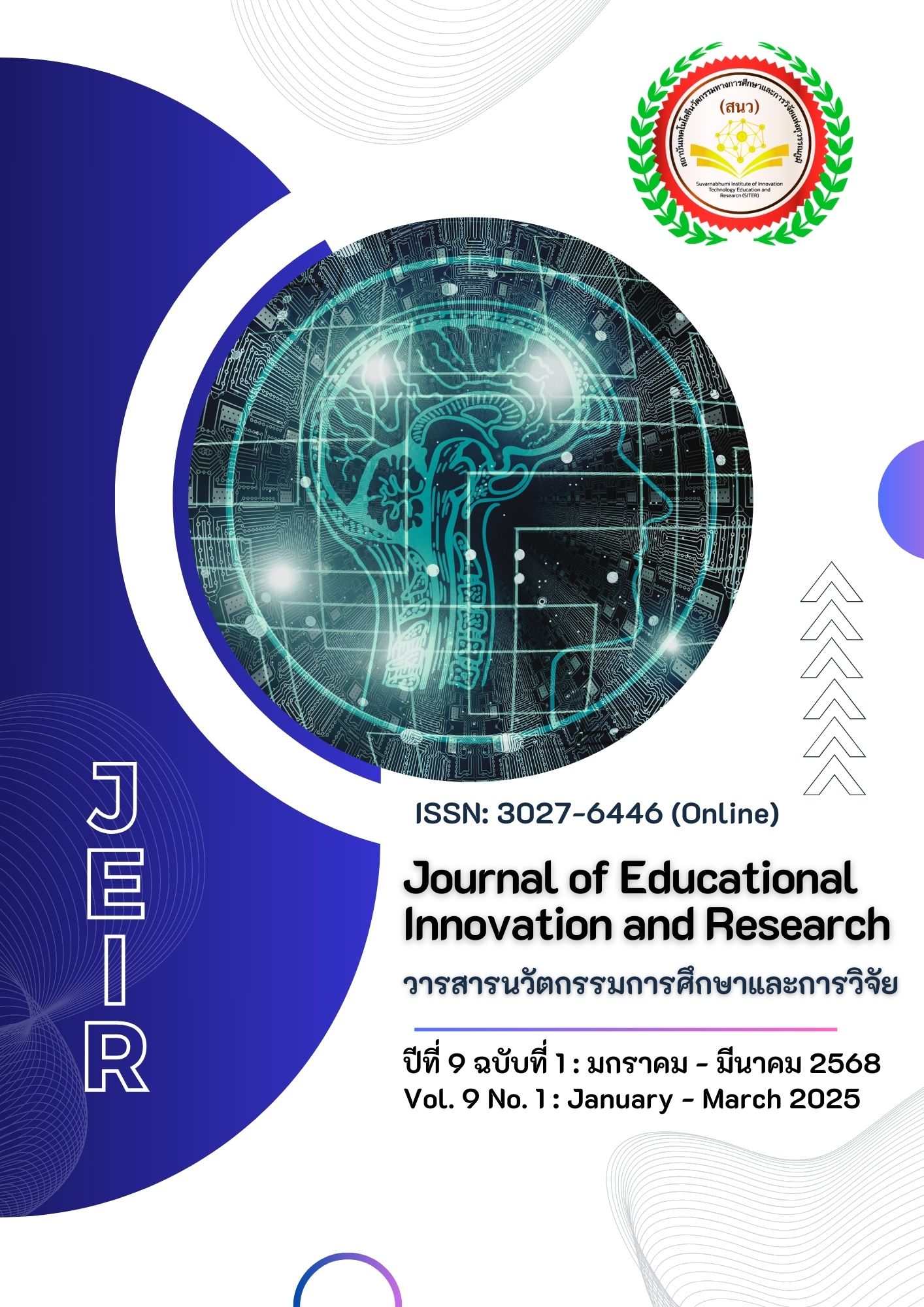การพัฒนารูปแบบการจัดแสงด้วยแอลอีดีแบบแถบ เพื่อส่งเสริมพัฒนาการเด็กปฐมวัย
Main Article Content
บทคัดย่อ
เด็กปฐมวัยเป็นช่วงสำคัญของการพัฒนาทั้งทางร่างกายและสมอง ซึ่งมีการพัฒนาอย่างรวดเร็วในด้านการรับรู้และการปรับตัว การส่งเสริมพัฒนาการในช่วงนี้จึงมีความสำคัญในการสร้างรากฐานที่ดีให้กับเด็ก ทั้งในด้าน IQ, EQ และการเรียนรู้ นอกจากนี้ การใช้วิธีการที่เหมาะสมกับพัฒนาการ เช่น การจัดแสงที่เหมาะสม สามารถส่งเสริมพัฒนาการได้ เช่น การกำกับตนเอง การนอนหลับ และการเจริญอาหาร ซึ่งแสงสีมีผลกระทบเชิงบวกต่อพฤติกรรมและการเรียนรู้ของเด็ก ในการวิจัยครั้งนี้เป็นการใช้รูปแบบการวิจัยและพัฒนา (Research and Development) โดยมีผู้ให้ข้อมูลประกอบไปด้วยครูผู้ดูแลเด็กในศูนย์พัฒนาเด็กก่อนวัยเรียนรวม 17 คน เด็กนักเรียนชั้นอนุบาล 2 กลุ่มตัวอย่าง 23 คน และเด็กนักเรียนชั้นอนุบาล 2 กลุ่มทดลอง จำนวน 19 คน โดยใช้การเลือกแบบเจาะจง เครื่องมือที่ใช้ในการวิจัยนี้ คือ แบบสอบถามและแบบบันทึกการสัมภาษณ์แบบกึ่งโครงสร้าง วิเคราะห์ข้อมูลโดยวิธีการหาความถี่ (Frequency) หาร้อยละ (Percentage) หาค่าเฉลี่ย (Mean) หาส่วนเบี่ยงเบนมาตรฐาน (Standard Deviation) และวิเคราะห์เนื้อหา (Content analysis) ผลการวิจัยพบว่า1)การส่งเสริมพัฒนาการเด็กปฐมวัยด้านการกำกับตนเอง ด้านการเจริญอาหาร และด้านการนอนหลับด้วยการเก็บข้อมูลเด็กปฐมวัยชั้นอนุบาล 2 ก่อนการใช้ห้องที่มีการการจัดแสงด้วย LED แบบแถบใน 3 ด้าน คือ ด้านการกำกับตนเอง ด้านการเจริญอาหาร และด้านการนอนหลับด้วย จำนวน 23 คน โดยภาพรวมอยู่ในระดับน้อย (= 1.65)2) การส่งเสริมพัฒนาการเด็กปฐมวัยด้านการกำกับตนเอง ด้านการเจริญอาหาร และด้านการนอนหลับด้วยการเก็บข้อมูลเด็กปฐมวัยชั้นอนุบาล 2 หลังการใช้ห้องที่มีการการจัดแสงด้วย LED แบบแถบใน 3 ด้าน คือ ด้านการกำกับตนเอง (แสงสีเขียว) ด้านการเจริญอาหาร (แสงสีแดง) และด้านการนอนหลับ (แสงสีฟ้า) จำนวน 19 คน โดยภาพรวมอยู่ในระดับมากที่สุด (
= 4.72)
Article Details

This work is licensed under a Creative Commons Attribution-NonCommercial-NoDerivatives 4.0 International License.
References
Alimoglu, M. K., & Donmez, L. (2005). Daylight exposure and the other predictors of burnout among nurses in a university hospital. Health Education Research, 20(4), 448-458.
Asfour, S. (2013). Energy-efficient lighting systems for commercial and industrial facilities. International Journal of Energy Research, 37(2), 173-183.
Bechtel, R. B., & Churchman, A. (2002). Handbook of Environmental Psychology. John Wiley & Sons.
Bredekamp, S. & Copple, C. (1997). Developmentally Appropriate Practice in Early Childhood Programs (revised edition). National Association for the Education of Young Children.
Evans, G. W. (2006). Child development and the physical environment. Annual Review of Psychology, 57, 423-451.
Heschong, L., Wright, R., & Okura, S. (2002). Daylighting impacts on human performance in school. Journal of the Illuminating Engineering Society, 31(2), 101-114.
Jirathakultana, S. (2020). Lighting and human behavior. PSRU Journal of Science and Technology, 5(1), 13-22.
Montessori, M. (1967). The Absorbent Mind. Holt, Rinehart, and Winston.
Odabasıoglu, S. (2009). Effects of Colored Lighting on The Perception of Interior Spaces [Master’s Thesis, Bilkent University].
Office of the Promotion of Learning Society and Youth Quality. (2557). Early Childhood Development: The Roots of Life. In the documentation for the academic conference "Transforming Learning... Knowing the Turning Points of Thailand, 6-8 May 2014. Office of the Promotion of Learning Society and Youth Quality.
Park, Y., & Choi, J. (2018). The effects of ambient light on elementary school children’s cognitive performance. Lighting Research & Technology, 50(1), 98-109.
Prasarnrajakit, P. (1978). Theory of Color and Interior Design. Sweet Pepper Graphic. Announcement from the Department of Labor Protection and Welfare regarding the Standards for Light Intensity. (21 February 2018). Royal Gazette. Volume 135.
Siriwanbus, P. (2013). Developmental Psychology Theory. (Edition 6). Active Print.

